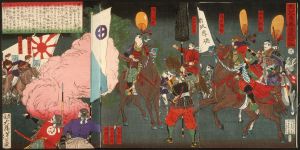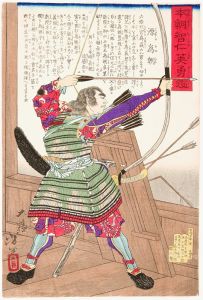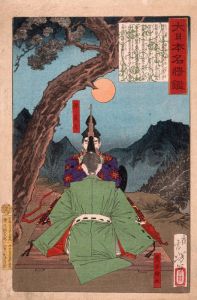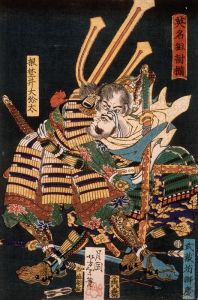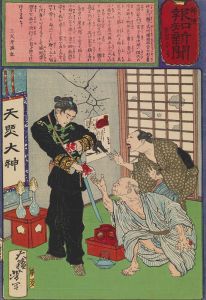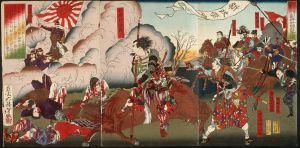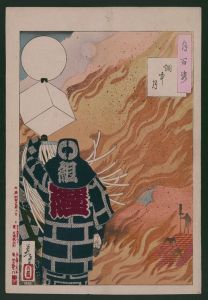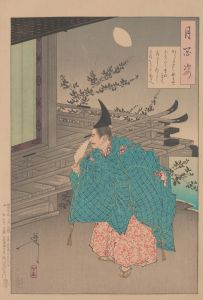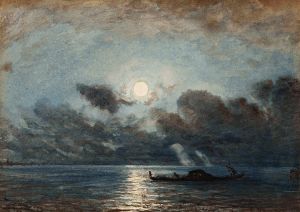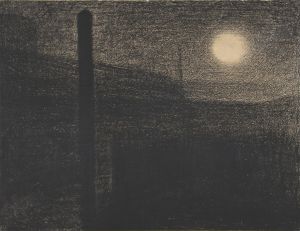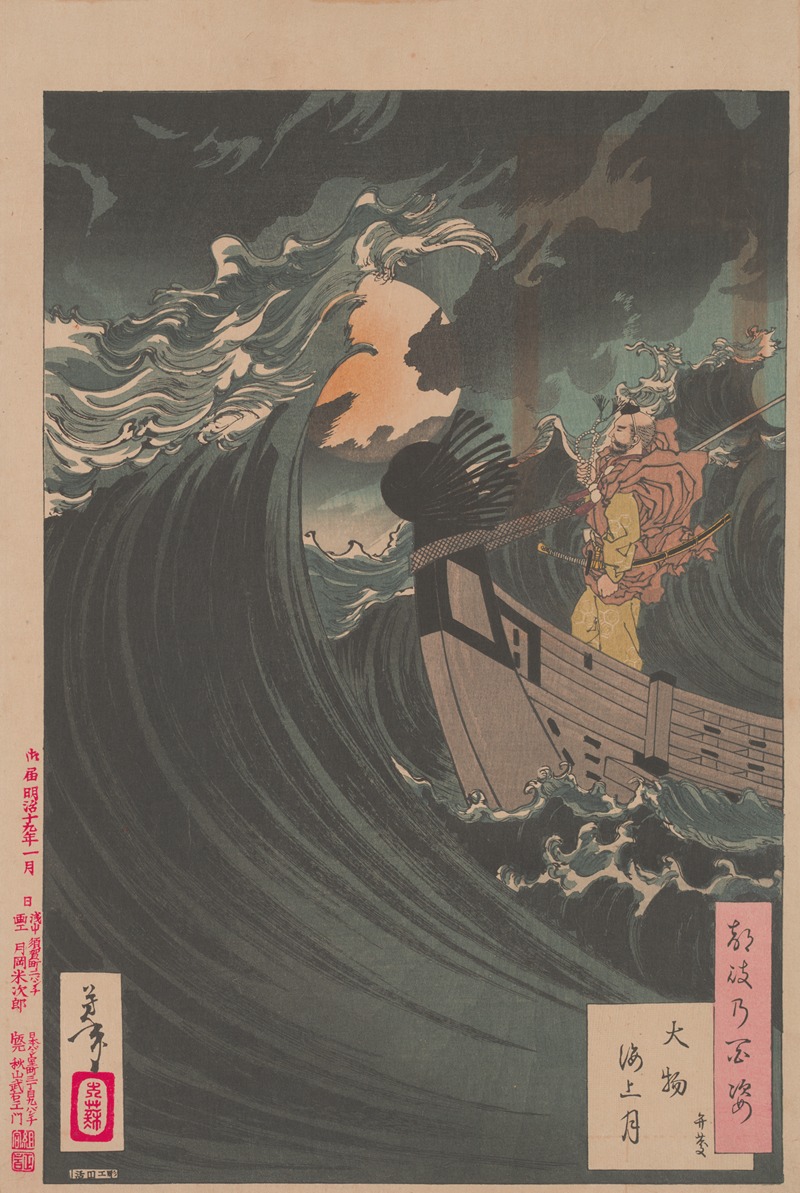
Moon above the Sea at Daimotsu Bay; Benkei
A hand-painted replica of Tsukioka Yoshitoshi’s masterpiece Moon above the Sea at Daimotsu Bay; Benkei, meticulously crafted by professional artists to capture the true essence of the original. Each piece is created with museum-quality canvas and rare mineral pigments, carefully painted by experienced artists with delicate brushstrokes and rich, layered colors to perfectly recreate the texture of the original artwork. Unlike machine-printed reproductions, this hand-painted version brings the painting to life, infused with the artist’s emotions and skill in every stroke. Whether for personal collection or home decoration, it instantly elevates the artistic atmosphere of any space.
"Moon above the Sea at Daimotsu Bay; Benkei" is a woodblock print by the renowned Japanese artist Tsukioka Yoshitoshi, who was active during the late Edo and early Meiji periods. Yoshitoshi is celebrated for his innovative approach to traditional ukiyo-e art, and he is often credited with revitalizing the genre during a time of significant cultural and technological change in Japan.
This particular print is part of Yoshitoshi's acclaimed series "One Hundred Aspects of the Moon" (Tsuki hyakushi), which was published between 1885 and 1892. The series consists of 100 woodblock prints, each depicting a scene inspired by Japanese and Chinese folklore, history, literature, or theater, with the moon as a central motif. Yoshitoshi's work in this series is noted for its dramatic use of color, intricate detail, and the ability to convey emotion and narrative through visual art.
"Moon above the Sea at Daimotsu Bay; Benkei" illustrates a famous episode from Japanese history involving the legendary warrior monk Benkei and his master, Minamoto no Yoshitsune. The scene is set at Daimotsu Bay, a location associated with the Genpei War, a conflict between the Taira and Minamoto clans in the late 12th century. According to historical accounts and popular legends, Yoshitsune and Benkei were fleeing from their enemies when they encountered a fierce storm at sea. In the print, the moon shines brightly above the tumultuous waters, adding a sense of drama and tension to the scene.
Benkei is often depicted as a loyal and formidable figure, known for his strength and dedication to Yoshitsune. In this print, Yoshitoshi captures Benkei's resolute character as he stands on the deck of a ship, seemingly unperturbed by the chaos around him. The composition of the print emphasizes the contrast between the calm, serene moon and the turbulent sea, symbolizing the tension between fate and human endeavor.
Yoshitoshi's "One Hundred Aspects of the Moon" series, including this print, is highly regarded for its artistic and cultural significance. It reflects the Meiji period's fascination with the past and the blending of traditional and modern influences. Yoshitoshi's work is characterized by a deep appreciation for the stories and characters of Japanese history, as well as a mastery of the woodblock printing technique.
The series was produced during a time of great change in Japan, as the country was opening up to Western influences and undergoing rapid modernization. Despite these changes, Yoshitoshi remained committed to the ukiyo-e tradition, and his work is seen as a bridge between the classical and modern eras of Japanese art. His prints continue to be celebrated for their beauty, technical skill, and the way they capture the spirit of their subjects.
"Moon above the Sea at Daimotsu Bay; Benkei" is a testament to Yoshitoshi's ability to convey complex narratives and emotions through his art. It remains a valuable piece for both art historians and enthusiasts of Japanese culture, offering insight into the rich tapestry of Japan's historical and artistic heritage.





